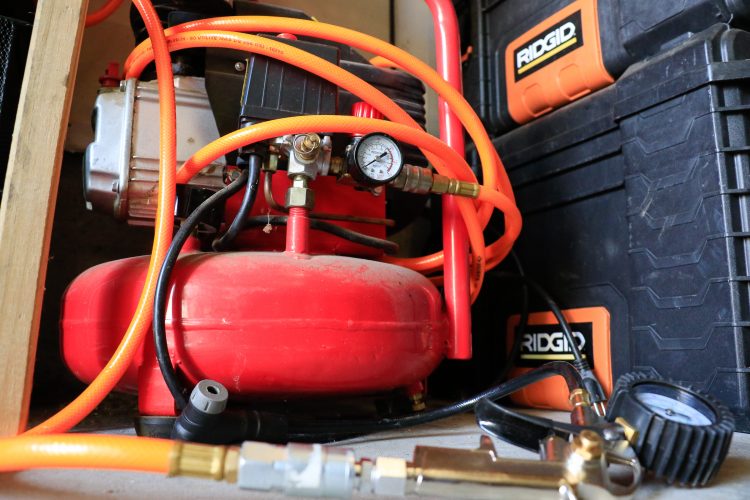
The more you ride your bike the more imperative it is to have a comfortable fit. For riders who are fortunate enough to own more than one bike, setting each one up to fit similarly is an important step toward enjoying the ride and preventing injuries. Geometry, suspension, components, and tube lengths can vary greatly between two bikes that are marked as the same size, but you should be able to achieve a similar riding position between them.
Though myriad elements change how a bike feels, where you touch the bike has the most immediate effect on your experience with it. The location of your saddle in relation to the bottom bracket is the most important factor, as it affects your knee and hip movement, which dictates your power output. For more info on setting up your initial fit, check out this article on the importance of fit, and our podcast episode on the same topic.

Whether you have had a professional bike fit or you simply have one bike that you feel most comfortable on, you can mimic that position on nearly any similar bike, within reason. The handlebar drop on your road bike will likely be far lower than that of your enduro bike, for good reason, but the saddle position can be relatively similar. Consistency between fits not only lowers your risk of injury but, for racers, allows you to train on any of your bikes while engaging your muscles as you will on your race bike.
Bike fitters often say that “a comfortable fit is a fast fit” so let’s start there. Below are some tips on how to measure your coziest bike and supplant those numbers on any similar bike.
Saddle height

Before measuring your saddle height, make sure the seat’s surface is at the desired angle. Between mountain bikes, the angle of two identical saddles can often be the same, while on some road or XC bikes with aggressively low handlebars you may have to point the nose down slightly to achieve a similar position. Dialing the saddle angle on a new bike may require riding with a wrench for the first few spins.

You can measure your saddle height a number of different ways, and as long as you are consistent it doesn’t matter too much which one you choose. Since crank arms and bottom brackets vary in size and shape, I like to measure from the center of the crank spindle to the top of the saddle. While holding the end of the tape measure in the center of the crank spindle, align the edge of the tape with the center of the seat post head. Make sure your eyes are level with the saddle when you record the height so you can accurately determine where the highest point lies.
You can also measure to a fixed point on the saddle-rail clamp if all of your saddles are identical. Saddles vary in shape like butts do, so if you use different saddles on your bikes you will need to include the saddle in the measurement. A good friend once mentioned, in jest, “my butt doesn’t change when I ride different bikes, so why should my saddle?,” and I tend to agree with her.
Saddle fore & aft

Aligning your saddle with your bottom bracket between bikes can be difficult, depending on the given seat post angles. Road and cross country bikes typically have much slacker seat tubes than enduro and trail bikes, making an exact fit transfer tricky. With a few exceptions, you can generally get the measurements set within 1cm of each other.
First, make a plumb-bob from a piece of string and a small weight. A lot of folks use fishing sinkers. I use my largest house key. Anything heavy enough to pull the string tight while not breaking it will work.
Hang the plumb-bob off the forward tip of your saddle, allowing the weighted object to hang below your cranks.

Lean the bike so that the plumb-line gently touches the crank arm. Then measure the distance between the center of the crank and the plumb-line.
As you transfer this measurement to other bikes you may have to recheck the saddle height after adjusting its fore and aft position. Saddle rails and clamps are angled, causing the height to shift slightly as you move the saddle along its rails.
Once the saddle angle, height, and fore/aft measurement are set, remember to write them down somewhere to make the process faster next time.
Cockpit adjustments

With your saddle in a similar spot on all of your bikes, the next step is to adjust the distance between the saddle and your hands by swapping or moving the stem and bars. You will first want to measure the distance between the tip of your saddle and the front of the steerer tube. This will give you an idea of how much longer or shorter each frame is, and what length stem and bars you need in order to achieve a similar fit.

In addition to the above measurement, reach and stack numbers are useful in determining the rest of your cockpit setup. Your frame’s stack is a fixed vertical measurement from the center of the bottom bracket to the top of the steerer tube. Reach is a horizontal measurement between the center of the bottom bracket and the top-center of your frame’s steer tube. These measurements form the starting points when setting up the cockpit on a new bike. Reach and stack are fixed lengths, but you can adjust the feel and handling characteristics of the cockpit by changing the stem length and height, handlebar width, handlebar sweep, and handlebar rise.

Raising your cockpit by moving the stem or installing a bar with more rise will position your body more upright and rearward, improving your descending position. Conversely, lowering the cockpit will put more of your weight on the handlebar, helping plant the front tire on climbs. Finding a balance between these two often requires a few test rides with incremental changes throughout. While initially setting up a new cockpit, I leave 1-1.5cm of uncut steerer tube above my stem so I can raise the bar height for super steep tracks.
The cockpit setup between two different bikes may need to be different. For example, if you have a bike with a 450mm reach, and you want it to fit like your bike that has a 470mm reach, you would first want to try a stem that is 20mm longer. The added length of the stem will slow down the bike’s steering somewhat, but you can find a good compromise with something in the middle of the two positions. For most riders, cockpit measurements do not have to be as precise as those of the saddle.
Bar width is another element that determines the feel and handling characteristics of your cockpit. Wide bars provide more leverage to lean and turn the bike, but they also require your upper body to move forward and down to reach wider. Think about doing a standard push-up. The wider your hands spread, the closer your chest is to the floor. At some point, we start to resemble a giraffe drinking water, with our hands spread as far apart as possible.
If you are moving your fit to a bike with a longer reach, and you already have the shortest stem possible on both bikes, you may have to consider narrower bars to make up for the added stretch in your arms and upper body. In this case, I would go ride the wide bars a few times to make sure they need to be cut. You can slide the grips inward to test a narrower position before making the permanent change. Then cut in 0.5-1cm increments until it feels right. Alternatively, if you feel comfortable with the amount of space between your hands, and weight on the handlebar, keep the bar as wide as the trees and your pecs will allow.

There are a lot of factors that determine how high your handlebars are, and the best way to measure their height is directly from the end of the bar. To do so, start by making your bars level. Find something that you can rest on two equal points on the bar, and place your level on top to measure the horizontal surface.

Next, drop the plumb-bob off the top edge of your handlebar until it taps the floor. Mark the plumb-bob at the bar and measure this distance with your tape measure. Voila, you know your bar height.

There you have it. Go forth and make all of your bikes feel great.
Bike fitting can be subjective and vary a lot, but many of the principles remain the same. Tell us about your fit tips, experiences, and expertise below.


















